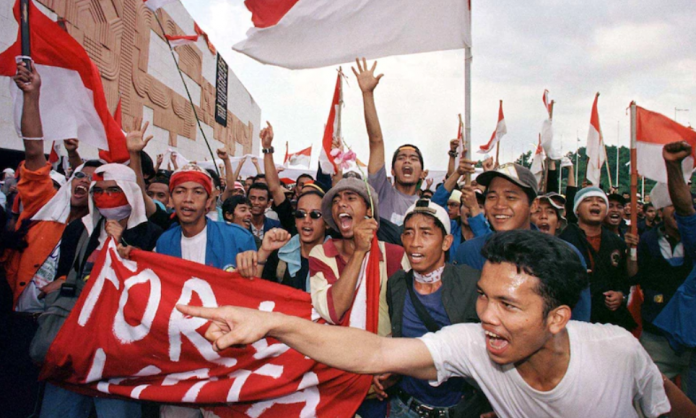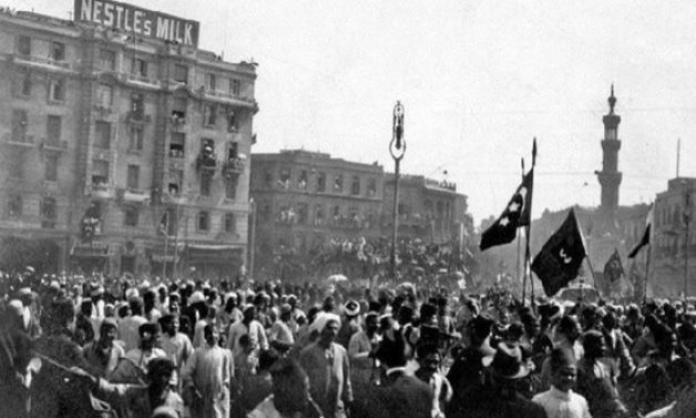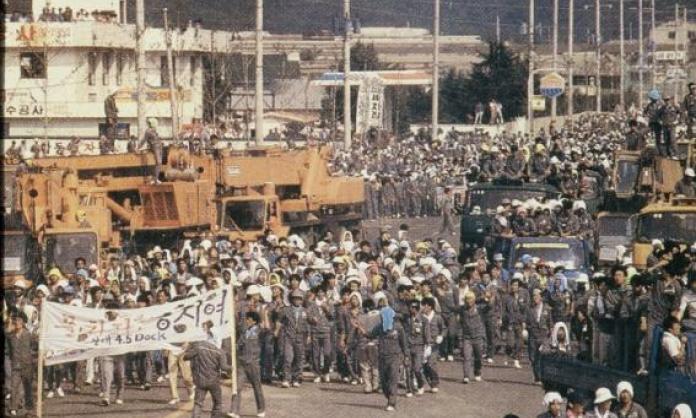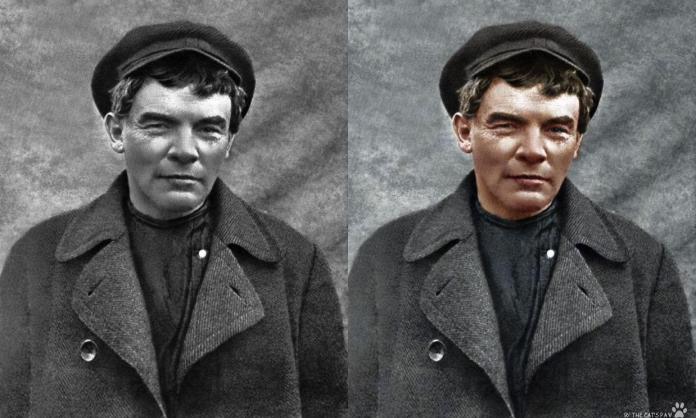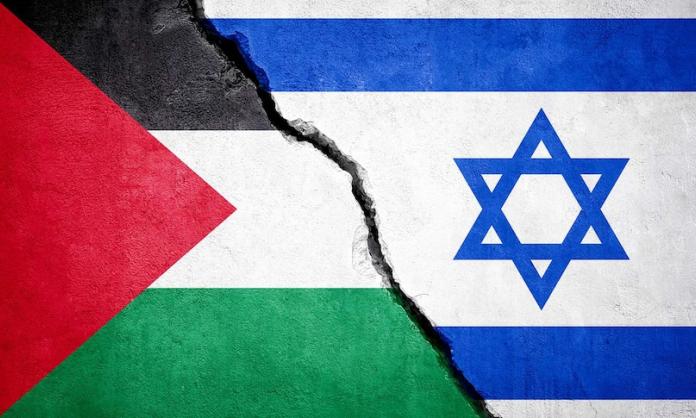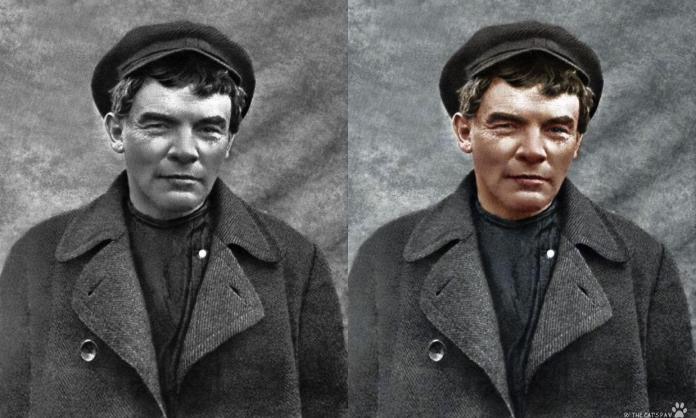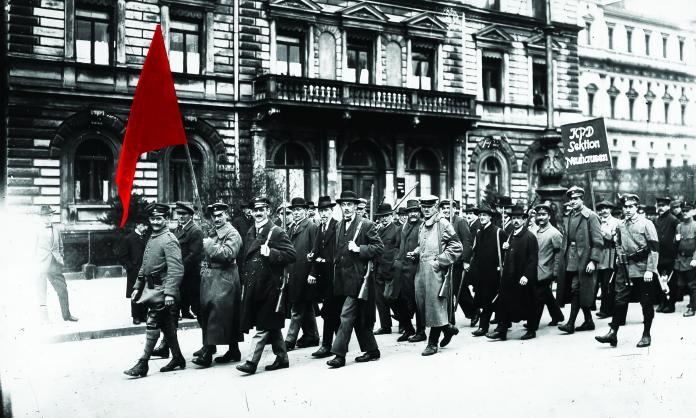While student radicalism is most often associated with 1960s Paris or Vietnam-era US campuses, there is a similarly rich history of university student rebellion outside of the advanced capitalist countries. One of these rebellions took place in Indonesia in 1998, when students led a movement that ended the 30-year rule of General Suharto. The movement involved hundreds of thousands of ordinary Indonesians in a fight for democracy, encapsulated by the slogan reformasi total (complete reform).
Suharto came to power in 1965 through a military coup. The coup was a counter-revolution against the political liberalisation that had emerged out of Indonesia’s independence movement. The Dutch withdrew in 1949, but in the shadow of 400 years of colonial rule, opposing class forces brought forward very different visions for the post-independence nation.
On one side was the mass of the population—workers and peasants—many of whom had started to organise in trade unions and peasant organisations to fight for improved living standards and against the remnants of colonial rule.
On the other side were those who had developed a degree of power and privilege within the colonial system—owners of land or capital, intellectuals and politicians educated in the Dutch system, as well as Dutch-trained military officers including Suharto, a former sergeant in the colonial army. To this layer, the militancy and organisation that had developed among the Indonesian masses, led by an alliance of the Indonesian Communist Party (PKI) and prominent left nationalist Sukarno, was a threat that had to be crushed.
Suharto named his post-coup regime the New Order. For many Indonesians, this moment in history was to become known as “the tragedy”. As is common with counter-revolutions, a campaign of violent repression was unleashed against all those associated with the mass movement. The PKI, which had grown to become one of the biggest Communist parties in the world, was essentially wiped out. Somewhere between 500,000 and a million communists and sympathisers are estimated to have been killed.
The slaughter and mass arrests were aimed not only at eliminating the organised left, but also at demoralising the population and destroying the legacy of protest politics—known as aksi. Oppositional media outlets and political parties were shut down.
Suharto also opened up the economy to foreign trade, which helped to enrich a new layer of wealthy elites, and the military took over large sections of previously Dutch-owned industry. Through repression and these economic “reforms”, the regime was able to maintain its grip on political power over the next two decades.
Yet aksi could not be permanently wiped out. During the early 1970s, it was university students who started to criticise openly, and mobilise against, the regime. This was the continuation of an established tradition—students had organised anti-colonial discussion circles and led protests during the colonial era. While students opposed to Suharto were suppressed in 1966, a minority of pro-regime students were encouraged to protest against Sukarno and the Communist Party, university campuses becoming what Marxist historian Max Lane describes in Unfinished Nation as “a privileged arena, where political mobilisation was possible for at least thirteen years”.
Students were depicted by the regime as an apolitical “moral force”, and many embraced that identity. But others rebelled and started speaking out against Suharto. They targeted their anger at the involvement of the military in politics, crony capitalism and the suppression of political debate.
Protests on university campuses took place throughout the country, reaching a peak on 15 January 1974 with a mass mobilisation in Jakarta that demanded sweeping political and economic reforms. These protests were met with repression, the regime banning all independent student organisations in 1979.
There were weaknesses within the student movement, in particular the tendency of students to look to discussion groups and NGOs as key to social change, and to be relatively dismissive towards the masses. But radical currents were nevertheless able to establish themselves and grow.
One such current was formed in the mid-1980s out of students who had left Indonesia to join the movement against Marcos in the Philippines, bringing back lessons in community organising and the understanding that students alone cannot win change.
In 1994, the People’s Democratic Union (later People’s Democratic Party—PRD) formed, bringing together student, worker and farmer activists from around the country who shared an outlook that the masses of workers and peasants must be organised to challenge the regime. The growth of peasant protests supported by students—most notably in opposition to the forced resettlement of 20,000 people for the building of a new dam—spurred aksi among peasants and workers across the country, including sporadic strikes. All of this helped to win support for the newly developing radical groups.
While the growing protest actions were met with the usual repression, this time they had developed a momentum that could not easily be contained. Suharto’s regime faced a crisis, which sharpened in 1996.
In the lead-up to the 1997 election, Suharto had become increasingly concerned with the political trajectory of Megawati Sukarnoputri, a leading figure in the previously tame Indonesian Democratic Party and daughter of Sukarno. The Democratic Party was permitted under Suharto’s electoral and political laws as long as it accepted the legitimacy of the regime. But in the mid-1980s, the party started to assert its independence, reflected in the leadership’s decision to run Megawati in the 1987 election, and again in 1997.
Her popularity drew supporters to the party, particularly from the poorer sections of the middle and upper class who were becoming increasingly frustrated with Suharto’s unchecked political power. Suharto attempted to remove Megawati in June 1996 through a rigged party conference. But the manoeuvre backfired, leading to an eruption of protests, including 15,000 in Jakarta, which developed into rioting and clashes with the military.
Protests continued for the rest of the year, repression only intensifying people’s anger. In December, a strike of taxi and bus drivers merged spontaneously with a student demonstration, becoming an important moment of worker and student unity.
By the start of 1997, there were protests somewhere in the country practically every day. Within months, they escalated to become the biggest since Suharto came to power.
One of the factors in this escalation was the election. The regime had set days aside for each of the permitted parties to campaign legally. For the mass of discontented Indonesians, this was seen as an opening for their grievances to be aired publicly. On the days set aside for the Islamist United Development Party, huge crowds of the poor and working class took to the streets, bringing signs and slogans that merged their support for the opposition leaders with a drive to make change themselves.
Despite the United Development Party leaders urging them not to, people continued to turn out in large numbers, reaching around 1 million across the country on 14 May. PRD activists successfully distributed hundreds of thousands of leaflets calling for the overthrow of Suharto, repeal of the dual function of the military and an end to corruption. As one leader described, “There was not one leaflet to be seen on the ground anywhere. Many housewives took them away and made more copies. When we started chanting ‘Mega, Star [the symbol of Megawati’s party], the people!’ the mass chant in reply was ‘The people are on the rampage!’”
A second factor escalating the protest movement was the 1997 Asian economic crisis, during which Indonesia’s currency plunged from 2,300 rupiah to the US dollar, to 10,000. The country’s debt skyrocketed to $142 billion.
The initial impact of the economic crisis was to dampen the movement, hope giving way to desperation. But in 1998, students took the lead and gave the uprising a new energy and political focus: the fall of Suharto.
Campus demonstrations took place all over the country, demanding that the government put price caps on basic commodities. The mobilisations grew in March, when Suharto was re-elected by a stage-managed People’s Consultative Assembly. Street fighting between students and the military broke out in Java after protesting students managed to force their way out of the university, and again in April at the Gajah Mada University campus, which the military proceeded to occupy. At the University of North Sumatra, students threw Molotov cocktails at soldiers.
In early May, an announcement that the regime would increase the price of electricity and fuel escalated the demonstrations even further. The military responded by opening fire and killing four students at the University of Trisakti. Over the next two days, rioting broke out across Jakarta, followed by demonstrations of students and workers in which mass meetings were held and government buildings taken over and occupied.
Students took over radio stations and made broadcasts criticising the military. On 19 May, they began an occupation outside the parliament, declaring their intention to stay until Suharto was removed from power. The next day, hundreds of thousands of people in every major city mobilised in support of this demand. The military was powerless. Suharto’s circle started to turn against him. On 21 May, Suharto stepped down, with Vice-President Habibie replacing him as president.
It was an incredible victory for the movement. The mass of Indonesians, sparked by student protesters, succeeded in overthrowing a dictator of 30 years’ standing. But what was to come next was an open question. For the regime elites who had clung to power, the hope was that Suharto’s removal and the promise of a slow transition to democracy would be enough to quell the movement. A special parliamentary session was called for November.
On the days of the special session, huge protests swept the country, initiated by students but increasingly drawing in the urban masses. There was anger that the military had prepared for the student protests with sharpened bamboo spears and knives, despite promising democratic reforms. Reinhardt Sirait, a student participant, recounted, “The sound of exploding tear gas and rifle fire had resulted in people coming out of their homes, out of the lanes and the street stalls to make barricades to slow down the military’s movements. They attacked them with rocks and Molotov cocktails, defending the students”.
The demonstrations culminated in the students taking over and occupying the parliamentary compound. Yet within hours, the student leaders decided to leave.
This reflected that, behind the united call for reformasi, serious political divisions had emerged. What should reformasi look like, and how could it be achieved? Radicals in the PRD were calling for the formation of a people’s committee, for the organisations formed out of the movement to be made permanent and replace the government of New Order elites. But moderates within the movement looked to the mainstream opposition leaders like Megawati, who had mouthed support for the protests but did not want a radical transformation of the status quo.
One of the main figures wanting to calm things down was Amien Rais, a member of various moderate Islamic organisations tied to the New Order who had started to speak out against corruption when the movement gained momentum in the 1990s. While aligning himself with the protests, he sought to prevent their further escalation.
Unfortunately, this approach prevailed. While protests against the military did continue for several weeks, the momentum had been lost. Many of the elites and military officials from the Suharto regime were able to stay in power.
The movement that oversaw the downfall of Suharto won impressive concessions, including the right for political parties to operate freely, the right for workers to form trade unions and freedom of the press. And while elements of the regime and military continued to wield significant power in the country, the memory of reformasi is nevertheless a source of inspiration. The bravery of its participants can be felt in the poetry of Wiji Thukul, a trishaw driver and carpenter who became a leader of the PRD and was disappeared in 1998, likely kidnapped and murdered by the military:
warning
if the people leave
while the rulers deliver their speeches
we must be vigilant
perhaps they have lost hope
if the people hide away
and whisper
when discussing their problems
then rulers should beware and learn to listen
if the people don’t dare complain
then things are dangerous
and if what the rulers say
may not be rejected
truth must surely be under threat
and if suggestions are refused without consideration
voices silenced, criticism banned without reason
accused of subversion and of disturbing security
then there is only one word: fight!




